
Sagrada Familia shows stone "can return to being used as a structural material"
Harnessing stone as a structural material can make architecture more enjoyable to both build and inhabit argues Tristram Carfrae, an Arup engineer working on the Sagrada Familia, in this Stone Age 2.0 interview.
Carfrae, who is a deputy chair of engineering firm Arup, believes that the potential of stone in architecture lies far beyond what it is typically reduced to in modern design – an opulent surface material.
"Stone has become a luxury cladding material, whether used as a rainscreen, or as floor tiling," Carfrae told Dezeen.
"We need to reposition stone back from a luxury material to a utilitarian one – which also happens to be beautiful," he explained.
"We have to start demonstrating stone's potential."
Stone is "plentiful, natural, low carbon and beautiful"
Dezeen spoke to Carfrae as part of Stone Age 2.0, a series exploring the material's potential as a durable, low-carbon alternative to steel and concrete. For him, there are many benefits to reintroducing stone in construction, with the most obvious stemming from its qualities as a natural material.
"The main benefit of structural stone is that it is a plentiful, natural, low carbon and beautiful material," said Carfrae.
"It can also transform the construction process and result in a structure that combines natural materials, traditional craftsmanship and digitally driven manufacturing to provide a building that people can better relate to, that provides greater pleasure and wellbeing."
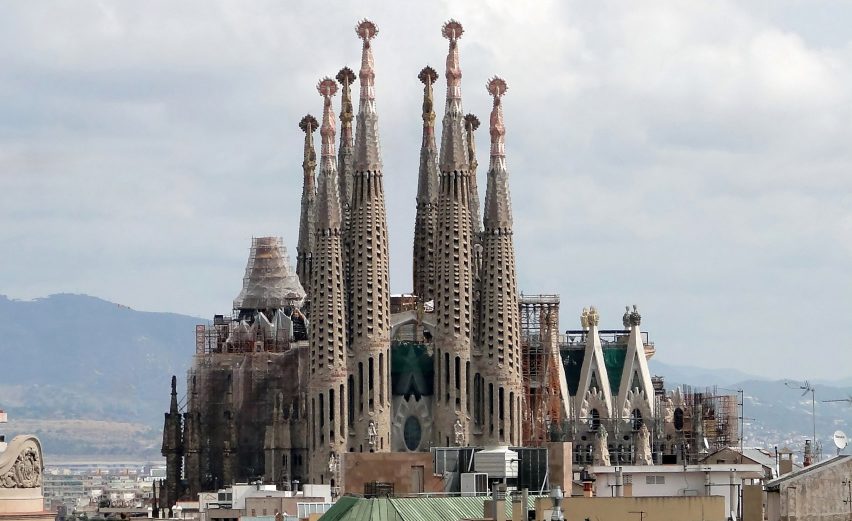
This belief is one that Carfrae is demonstrating first-hand at the Sagrada Familia, where his team at Arup has been helping engineer the world-famous project conceived by architect Antoni Gaudi.
His team was invited by La Sagrada Familia Foundation to help speed up the construction and reduce the weight of one of its many colossal elements – the tower of the Virgin Mary – all "while remaining true to Gaudi's vision".
"The basilica is, of course, mainly constructed from stone in the form of monumental masonry, much the same way as all large churches and cathedrals," he explained.
"But the foundation was keen to speed up construction and needed to reduce the weight of one of the main towers, the Mary Tower, which is supported by the crypt built for a much smaller church designed by Francesco Villar, before Gaudi was appointed."
Stone construction no longer a "neighbourhood nuisance"
To achieve this, Arup utilised modern construction techniques to develop a construction system based on prefabricated stone panels.
"Together with the Sagrada architects and builders and 2BMFG engineers, we jointly devised a concept using prefabricated, post-tensioned stone panels that could be mass-produced offsite and then quickly assembled on site," Carfrae explained.
By using these reinforced stone panels instead of traditional masonry blocks, the thickness of each component was reduced from approximately 1,200 millimetres to 300 millimetres, ensuring the tower was "within the weight-bearing capacity of the foundations of the original crypt".
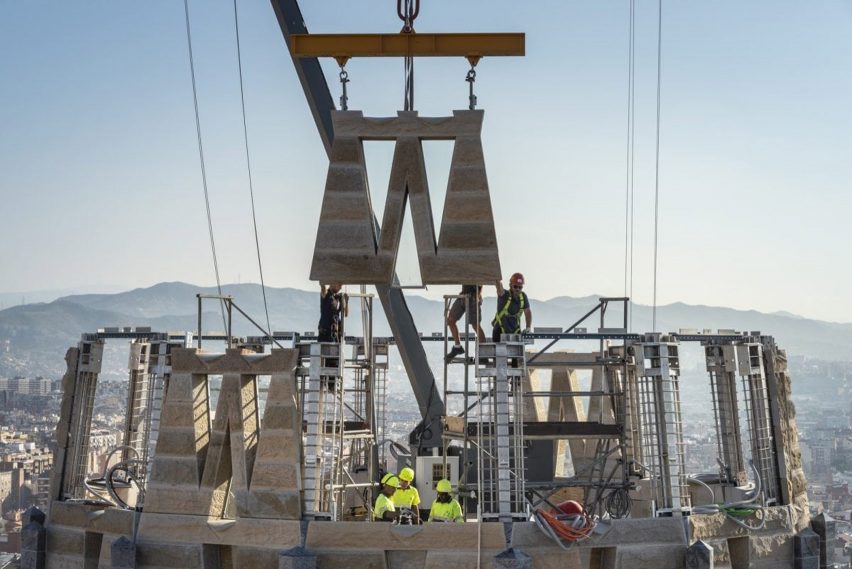
"This manufacturing and assembly process also increased the speed of construction while freeing up the main tower crane for other duties for most of the time," said Carfrae.
"The Mary Tower construction was so successful, that the process was subsequently adopted for all the main towers, with five of the six now completed."
Carfrae said the process of using structural stone in this way was enhanced with the use of digital, building information modelling (BIM) models, which "the Sagrada design team pioneered more than 20 years ago".
BIM models have enabled the build team to cut stones using computer-controlled, diamond-tipped band saws, leaving only the surface finishes to the craftsman, speeding construction.
"The exposed faces of each stone are still hand-finished by loving craftsmen to create an aesthetic that has evoked pleasure, and enhanced wellbeing, for centuries," Carfrae said.
"Construction is thereby transformed from a dirty, noisy, labour-intensive neighbourhood nuisance to an act of theatre – enormous accurately made components being quietly and safely lifted into place by a handful of people."
"We need more prototypes"
According to Carfrae, advances in stone construction pioneered at the Sagrada Familia demonstrate how stone can be effectively reintroduced to modern architecture.
Particularly, he hopes it will draw attention to how stone's natural compressive strength can be exploited and enhanced through measures such as post-tensioning.
"If we can properly use [stone's] compression strength, which is typically greater than concrete, while designing for alternative tension paths, for example using post-tensioning, then we can return to it being used as a structural material."
"As well as reducing the carbon intensity of the usual steel and concrete construction,
building using post-tensioned stone panels could be faster, cheaper, lighter and more durable."
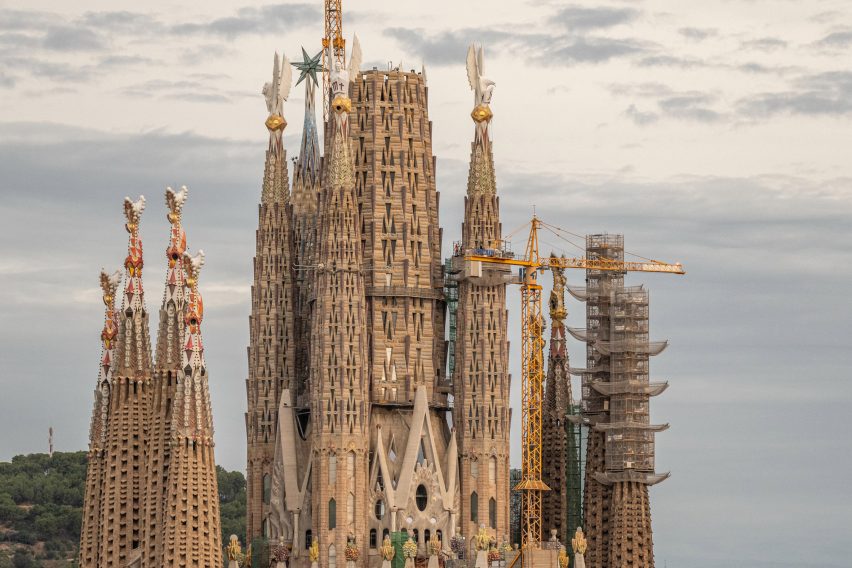
Carfrae has been a trailblazer in stone construction for many years, with his earliest exploration of the material being at the Pavilion of the Future for the Seville Expo in 1992, for which he worked with Peter Rice at Arup and with David Mackay of studio MBM Arquitectes.
More recently, he worked on the Wurrunguri sculpture by Chris Booth in Sydney's Botanical Gardens.
However, while projects like these are impressive feats of engineering he believes more ordinary examples of structural stone are required to encourage its uptake in the industry.
"There have been some startling examples, such as Philip Block's Armadillo Vault at the Venice Biennalle, and the work at Sagrada, but we need more prototypes and examples of stone being used in an ordinary context," he reflected.
"The industry won't transform overnight, or even in a decade, but we can still make a start."
Alongside a lack of examples, Carfrae said a barrier to its uptake is the "ongoing debate about how sustainable stone really is". Yet, he believes it can be used responsibly.
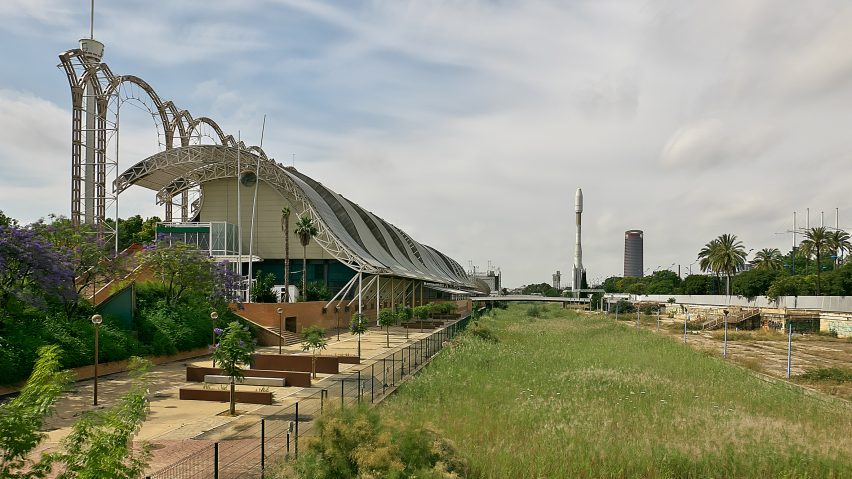
"It is, after all, not a renewable resource, but it is very plentiful," he explained.
"The amount of natural material quarried from the ground is about the same as for concrete, but without the energy-intensive process of transforming that material into useful structural product," continued Carfrae.
"All the quarrying, shaping and assembly of stone can be done by electric machines powered by renewables."
Stone should "be considered alongside other materials"
He added that by using techniques such as post-tensioning to reduce the required weight of structural stone components, as demonstrated by the Sagrada Familia, we will be "using far less of it than we did historically".
Using stone as part of a hybrid structure in this way also reflects what he envisages as the most appropriate way for the material to reenter the toolkit of architects and builders.
In fact, he hopes that hybrid structures will also become a go-to method for construction in the future of modern architecture.
"I think that stone – and timber and other forms of masonry – should re-enter the structural lexicon and be considered alongside other materials," he explained.
"Material selection should be made project by project, depending on context and the desired outcomes," he continued.
"But always remember that stone, especially when quarried and manufactured using electrical equipment can be very low carbon, and extremely beautiful."
This concept echoes the views of architect Aurore Baulier, another proponent of structural stone who has spoken to Dezeen for its Stone Age 2.0 series.
"Just because you can do a solid wall in stone doesn't mean you should be doing it," Baulier told Dezeen. "A better combination is to start actually having hybrid structures with timber and stone."
Engineer Steve Webb agreed. In an opinion piece written for Stone Age 2.0, he said "stone makes sense, but it is not a silver bullet".
The photography is courtesy of the Sagrada Familia Foundation unless stated otherwise.
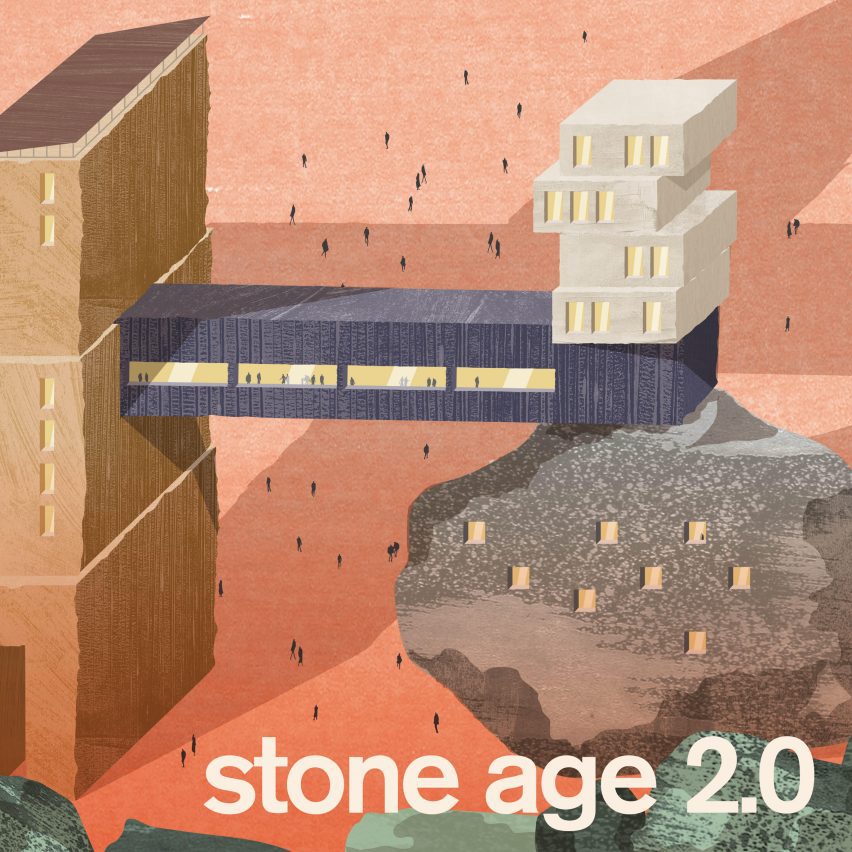
Stone Age 2.0
This article is part of Dezeen's Stone Age 2.0 series, which explores the potential of stone to be a viable, low-carbon, modern structural material.